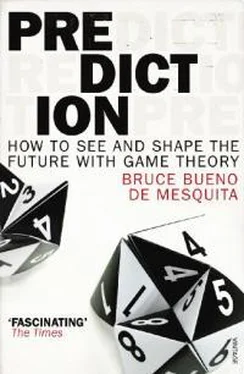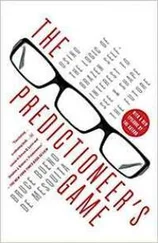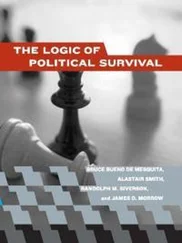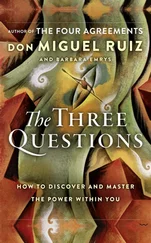What, then, are the right and wrong incentives? Why do some companies commit fraud while others—the vast majority of firms—even in dire circumstances do not? In answering these questions we can gain insight into how to alter incentives appropriately and how to anticipate who has the wrong incentives and is at serious risk of committing fraud.
One clear implication of the fraud model my colleagues and I developed is that the broader the group of people CEOs rely on to keep their jobs, the more likely it is that the shareholders who put them in power will throw them out. That’s what happens to leaders of democracies, and that is what is more likely to befall underperforming CEOs in relatively democratic companies. To save themselves, they are perversely incentivized to misrepresent the corporation’s true performance so that they don’t have to explain underperformance in the first place.
This is not to say that more “autocratic” companies (fewer people to please in the power structure) are incapable of fraud. It’s just that things have to be considerably worse for those companies before management sees sufficient risk to their jobs that they are tempted to engage in fraud. Our sliding scale extends across the public/private company divide as we consider partnerships (think of them as oligarchies) and family companies (monarchies).
Government regulators and boards of directors could do a better job of protecting shareholders and employees from the risk of fraud. To do so, the focus needs to be more squarely placed on the incentives executives have to monitor themselves and their colleagues in the face of declining business performance. Knowing how to adjust governance structures to induce the right incentives is the way to regulate firms successfully. Balancing incentives in good times and bad is a major challenge for running a business in a way that attracts and retains top-quality executives and satisfies shareholder expectations. Optimal corporate governance design needs to be done on a case-by-case basis, taking the nature of the firm’s market into account. A sweeping regulation cannot facilitate the fine-tuning that is needed to get incentives right. Confidence in business requires that we move in these directions rather than putting our energies into finding greedy individuals to blame or one-size-fits-all fixes for what are manifestly corporate governance problems. Looking for greed is just like the drunkard looking for his keys under a lamppost. More often than not, what’s lost is not under the bright lights.
In a broader sense, if we truly want to make it easier for corporate executives to come clean about problems they discover as soon as they discover them, then we also ought to change the law so that they are not punished for spilling the beans on themselves.
Lots of companies discover problems with their products or their performance long before these problems become public. Indeed, it is a good bet that some serious problems never become public at all. A few years ago, for instance, the 3M Corporation pulled Scotchgard off the market. Scotchgard was one of its biggest earners, and yet one day it was in the stores and the next it was gone. A few years later, 3M introduced what it called a new, improved Scotchgard. The EPA and other firms in the chemical industry wondered whether 3M had discovered a health or safety risk associated with the main chemical in Scotchgard, a chemical not found in its “new and improved” product.
I don’t know whether 3M discovered a problem or just decided one day to change a successful product. Imagine that they did find a problem. What would they—no, better yet, what could they responsibly do? Company leaders in such situations may be eager to reveal whatever it is they’ve discovered, but they also realize that doing so would violate their fiduciary duty. They are damned if they do and damned if they don’t. A public announcement leaves them open to lawsuits by people who used the product before anyone—inside or outside the company—knew there was a problem. These suits can be devastating to shareholder value, and it is shareholder value that corporate directors are legally obliged to protect.
Probably many companies would reveal what they know when they discover trouble if the government would immunize them against prosecution for any problems in their products that were previously unknown to them. The government won’t. Litigation is the favored solution, as opposed to rewarding responsible, public-spirited actions by corporate executives in difficult straits. The result is that corporate leaders are given the wrong incentives. Remember all the litigation surrounding the problems caused by DDT? Do you also remember that the Royal Caroline Institute won the Nobel Prize for Physiology or Medicine in 1948 for developing DDT? With litigation run rampant, we fail to provide corporations and their leaders with protection for reasonable expectations and decisions that, not by any misdeeds on their parts, may simply turn out to be wrong.
In this chapter, we’ve explored how to frame questions. The main idea is to isolate the individual components of a problem that shape its resolution. Then it’s a straightforward matter of turning those isolated individual components into issues that, depending on the circumstances, may be decided separately or that may be linked to each other. Once an issue is well defined, experts have an easier time talking about who really will try to influence the decision on each item. Then we can have the computer play the forecasting and engineering game to simulate what proposals each player is expected to make to each other player on a round-by-round basis, and we can bring into relief the incentives that players have to accept or reject proposed solutions.
With the computer program at the ready, we can sort through the problem and not only predict results, as I did with the napkins, but begin to engineer results to change outcomes, as I hinted could be done to prevent corporate fraud. Engineering outcomes is the subject of the next two chapters.
6

ENGINEERING THE FUTURE
DIPLOMATS ARE CONVINCED that a country’s name is an important variable that helps explain behavior. That’s why the Department of State is organized around country desks, just as the intelligence community is organized around geographic regions. Leaders of multinational corporations take much the same view. When they have a problem in Kazakhstan they call their guys in Kazakhstan to find out what to do. That seems eminently reasonable and right. Yet it is only partly right and terribly inadequate for solving most problems, or, as I see it, for engineering the future.
Now don’t get me wrong. Knowing about places, and how different they may be, is important, but, perhaps surprisingly, it is not as important as knowing about people, and how similar they are, wherever they are. I have not arrived at this view lightly nor, I hope, in ignorance. As a matter of fact, the training that led to my Ph.D. molded me into a South Asia specialist. I even studied Urdu for five years, both during my undergraduate and graduate studies, and did field research in India—so I certainly respect and value area expertise. But I don’t think it’s the way government or business should organize itself for problem-solving purposes.
Here, as in so many other ways, I am swimming upstream against a strong current. Mine is a controversial stance in many of the circles in which I travel, and many in those circles see views such as mine as foolish at best and dangerous at worst. Still, I do not shy away from the risk of publishing predictions about things that have not happened—and by and large, those who disagree with me do not do the same.
Читать дальше












